
 French 2nd class oceanic submersibles (1925-1938)
French 2nd class oceanic submersibles (1925-1938)Sirène (4), Ariane (4), Circé (4), Argonaute (5), Diane (9), Orion (2), Minerve (6), total 34.
WW2 French Submersibles:
Surcouf | Requin class | Saphir class | 600/630 Tonnes class | Redoutable class | Aurore class | Roland Morillot class | Emeraude class | Phénix classThe largest French Submarine serie.
In September 1939, with 34 boats, a good chunk of the total submarine force of the French, the 600-630 series were supposed to defend French interests in the Mediterranean (notably against the Regia Marina) and perform a variety of missions, like commerce raiding in wartime. Retrospectively they were seen as average, to bad submarines, with limited performances, poor habitability, poor control underwater, and non-standard or odd features that made them peculiar, or difficult to use, like external having oil tanks and non-reloadable torpedo tubes, including TT banks firing substandard torpedo models intended for commerce raiding. AA became a consideration as well as standardization only from 1934. Improvement came too late, with the 900 tonnes Aurore class, a new standard imposed in 1939.
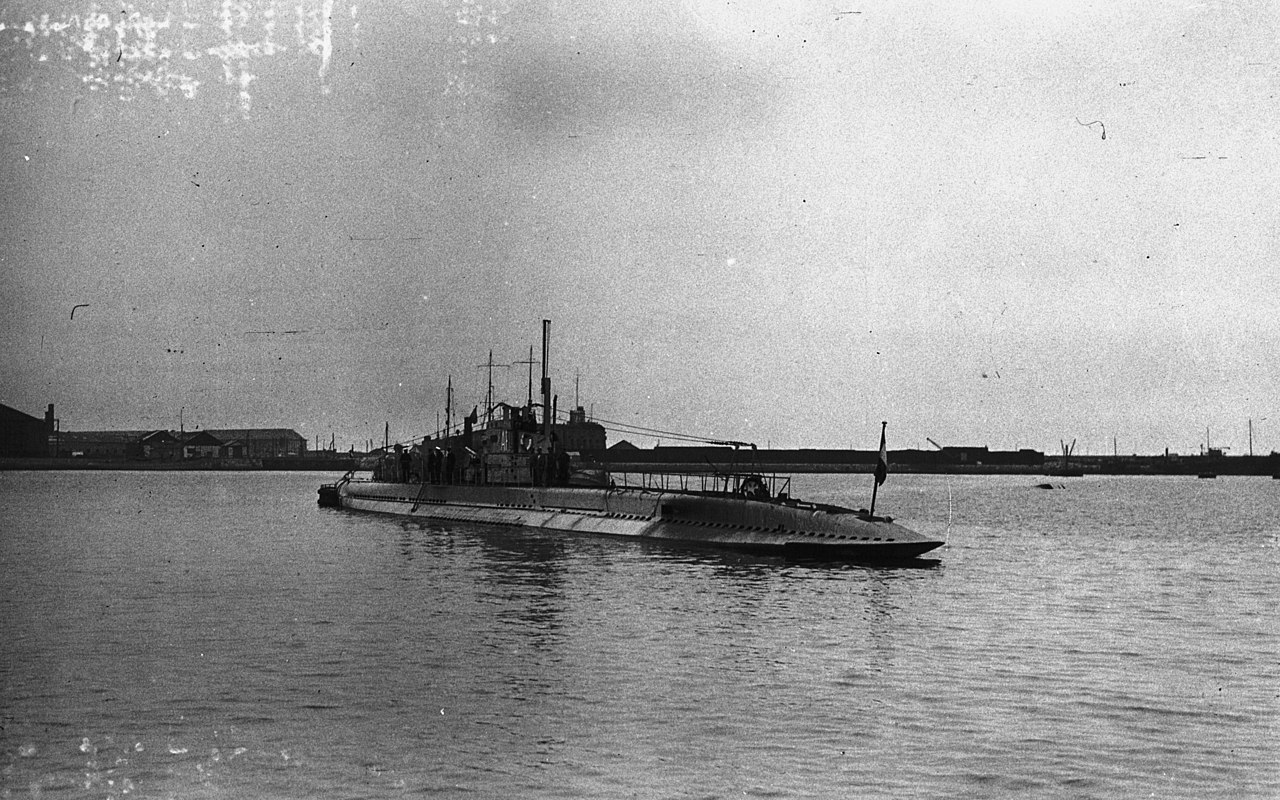
Ariane in Cherbourg in 1932
Roots of the 2nd class oceanic program
Like other nations in the interwar, France had great projects for submarines within the accepted framing of the Washington treaty of 1922. To manage the protection of her empire, submarines were considered ideal deterrents, an idea also embraced by the Netherlands for their Dutch East Indies Colonies, alongside minelayers. WWI already showed an operational pattern, from which four main types emerged:
- 600 tonnes coastal submarines (broadly inspired by WWI UB types): 600/630 tonnes serie
- 600-800 tonnes minelaying submarines (inspired by the WWI UC types): Saphir class
- 1,000/1,500 tonnes oceanic submarines: Requin/Redoutable class
- 3,000+ tonnes cruiser submarines: Only one, Surcouf.
The 600 tonnes coastal submarines were a deduction of the best standards and divisions of allocated tonnages. This displacement allowed to mount a sufficient torpedo armament, while the range was ideal for defensive sorties and the confines of the Mediterranean. The last WWI coastal types built by France has been the Armide class (1916) of 457 tonnes, requisitioned boats for foreign purchase, and the sole O’Byrne (1919) with 340 tonnes standard which already gave some hints of what a coastal boat could be. Alongside, France received as war reparation the Victor Reveille, (U79), Jean Auric (U 108), or René Audry (U 119) and 36 more German U-boats awarded, well studied and tried in the postwar year.
Definition by the 1922 naval program
Therefore when the 1922 naval programme was established, submarines were part of the menu. Indeed, on July 7, 1922, the naval program and general coastal defense program are elaborated, and sanctioned by Marshal Pétain, and as main advisor, Vice-Admiral Grasset since February 1921 at the head of the admiralty had to compose with massive budget-restrictions since 1919. He was a specialist of coastal defence, assigned in 1894 already to draft instructions for the application followed by a vast study published in 1899. Vice-admirals of Bon, Du Vignaux and Ratyé participated in this plan and well as Rear Admiral Lanxade, Director of the Aeronautics Department.
Report 22 of 12 June 1922 on the general coastal defense program reported by Rear-Admiral Brisson, Deputy Chief of the Naval Staff, urge the reuse of equipment from recrently decommissioned ships and construction of new “ouvrages” for the defense of naval bases and commercial ports, having the advantages of an almost immediate reactivity fleets cannot provide. Priority is given to coastal defense submarines too, because of their mobility.
Flotillas as defined comprised both submarines over speedboats, prohibiting any blockade, landing or minelaying operations by the enemy. They also could provided cover for coastal convoys and attack enemy submarines and play a surveillance and intelligence role. The program provides for five squadrons of four to five vessels each to be completed in 12 years. Speedboats were planned on paper, to be mass-produced during a mobilization. The program therefore only envisaged the construction of two squadrons in order to train personnel and perfect their design.
It should be noted that the program is ratified and voted by the parliament before a change of regime: In October 1922, Mussolini led the “March on Rome” bringing him to power on October 28, 1922. Since February 6, 1922 and the Washington Treaty, France already saw Italy as a rival and the Navy has a part in it. Coastal Submarines should play their part, with a first a squadron of four based on the Mediterranean rather than the Atlantic, and a future ratio of 3/4 new flotillas reserved for the Mediterranean threater.
Development of the “600 tonnes” coastal Types
Based on the previous studies made for the Requin class laid down in 1923, based on WWI U-Boats obtained in war reparations, and even earlier, like the Roland Morillot, a 265 tons UB-II type captured in 1917, the Oceanic types U-162 and U-166 (820 tonnes standard, U-93 class) of the late UB III types 94, 99 and 155, the 535 tonnes boats considered as the base for interwar German U-Boat designs. These ten units were actively used for years, until 1937 for some like Jean Corre. In addition, 36 were also awarded, but not pressed into service and rather studied and/or scrapped: 12 U-Types, 12 UB-types and 12 UC-types (minelayers).
The basic specification, drawn from the 1922 program asked for a 2nd class oceanic type, 1/3 lighter than the 950 tonnes Requin class, which was essentially a mix of late U-Types and UB III type, crucial notably for their powerplant arrangement and space management. This requirement logically called for a 600 tonnes type. Although “2nd class”, it was not considered “coastal”, but the small displacement made it obvious for the 1930s standards, less son in the early 1920s. They were just seen as a cheaper alternative to the 900 tonnes Oceanic types, essentially 1st class boats intended for colonial service, and thus for longer cruise.
The 600 tonnes were rather intended as defensive submarines for coastal operation, manoeuvrable and well-armed. The order for three squadron of four boats was to be spread between yards, leading to diverging specs, and therefore, three separate classes based on the same requirement: The Sirène class, at AC de la Loire, Nantes (Atlantic coast), the Ariane class at AC Augustin Normand (in Normandy, the former Torpedo Boat specialist) and the Circé class at Schneider et Cie (Chalon sur Saône, France) NyD. They were compared to the later Italian 600 Series, British S class, and German Type VII U-boat, although of a much older conception.
 Sirene class submersibles (1925)
Sirene class submersibles (1925)
Sirene, Naiade, Galatee, Nymphe
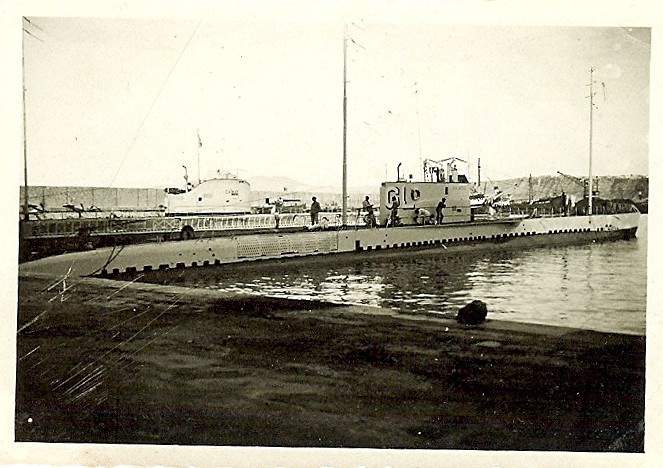
FS Siree in Oran
The four 600 tons 2nd class were double-hull models Loire-simonot type. They were cramped and had a bad reputation. All four were built in A C de la Loire, Nantes. First of the serie. Retrospectively the small tonnage proved detrimental to their internal management. They had Poor habitability, were cramped, were slow to dive, showed repeated failure of the electrical controls. They were also handicapped by having three fourth of their fuel storage in the exterior holds.
Sirene:
Sirène was laid down on 2.1923, launched 6.8.1925, completed and commissioned in 1927 (Q123). She was scuttled in November in 1942 Toulon. Raised, to be repropriated by the Italians. But she was never refloated nor repaired and sunk in an allied air raid in June 1944.
Naiade:
Q124 was laid down on 2.1923, launched 20.10.1925, completed in 1927. On 01.10.1938 her captain was LV BLACHÈRE. On 27.11.1942 she was guarding the submarine dock in Toulon. Unable to set sail, sabotage was prepared and she was scuttled when the Germans took the port. She was refloated of 11.03 and on 16.03.1943 she was moored to the Milhaud wharfs. Due to both overhaul, she sank on 17.04.1943. Refloated on 17.07.1943 she was sunk at Petit Rang, following an air raid of the 15th Air Force, 24.11.1943 (no casualties). Refloated in 1945 she was stationed as a spare parts reserve.
Galatee:
Hull number: Q132. She was laid down on 7.1923, launched 18.12.1925, commissioned in 1927. Commandant on 08.27.1938: CC BERTRAND. On 27.11.1942 she was guarding one of the large North-West Vauban basins in Toulon with EURYDICE. Unable to set sail, sabotage was prepared and she was scuttled as the Germans arrived. She was refloated on 25.06.1943. She was seized by the Italians and placed in reserve in the arsenal. Seized again by the Germans on 09.09.1943 she was towed to the west Missiéssy moorings, in January 1944. She was next moored at Brégaillon on 03.02.1944. She was sunk during the 05.07.1944 allied air raid (No casualties). She was refloated in 1945 but used as a parts reserve.
Nymphe:
Hull number Q133. She was laid down on 1923, launched on 1.4.1926, commissioned on 1927. Severe accident in 1938, considered a total constructive loss. She was never repaired and disarmed, stricken and BU that year.
⚙ Sirène class specifications |
|
| Dimensions | 64 m long, 5.20 m wide, 4.30 m draft. ( feets) |
| Displacement | 609 t. standard – 757 t. Full Load |
| Propulsion | 2 shafts Sulzer Diesels, 2 electric motors, 1300/1000 hp |
| Speed | surface/sub 14/7-1/2 knots |
| Range | Practical depth 80 m |
| Range | RA: 7,000/70 nautical miles surface/sub @ 7kts. |
| Armament | 7 TT 550 mm (21 in), 1x 3-in (76 mm). |
| Crew | 42 |
 Ariane class submersibles (1925)
Ariane class submersibles (1925)
Ariane, Ondine, Eurydice, Danae
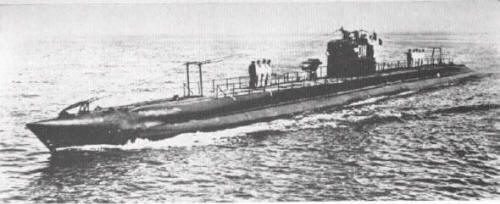
The Ariane class
All four were built at A C Augustin-Normand NyD, Le Havre. Normand-Fenaux type ordered under the same 1922 program. This was largely considered the most successful of the whole 600 series.
They displaced 626/787 tons submerged, for 64 m in lenght and a crew of 41. As usual, armed with a single 3-in gun, a twin 13 mm Hotchkiss AA and seven 21.7″ torpedo tubes, 6 in the bow and on in stern. To speed was 14 knots surfaced adn 7.5 knots submerged thanks to two Diesel engines, likely Sulzer, and two electric motors for a total output of 1,200 BHP/1,000 SHP.
Ariane:

Ariane in 1929
She was commissioned on 1 Sep 1929. In 1939, she was based at Cherbourg, 14th Submarine Division, 2nd Submarine Squadron (6th Squadron) with her sister ships Danaé and Eurydice and Diane, all based at Oran, Algeria. Ariane started patrols off the Canary Islands, as it was believed that German cargo ships had taken refuge there in September to act as supply ships for German U-boats.
With the invasion of 10 May 1940, and war with Italy on 10 June 1940, Ariane still was still based at Oran and started operating against Italian assets, patrolling waters of Libya and the aegean.
After France′s surrender however, she went under control of Vichy France and during 3 July 1940 with Operation Catapult, Ariane was in port at Mers El Kébir, Oran that day. She was put on high alert, made ready to depart, which was done at 15:00 with Danaé leaving the outer harbor at 15:30 with Diane and Eurydice and ready for action at 17:54.
Ariane was 4 nautical miles (7.4 km; 4.6 mi) west of Diane which herself was close to Pointe de l’Aiguille but they were never close enough to attack. That night they patrolled off Oran in a north-south patrol line and remained on patrol until 20:00 on 4 July, then moved back to Port.
As rhe attack on Dakar was signalled on on 8 July Ariane, Diane, and Eurydice were ordered to patrol off Cape Falcon, Algeria. In October 1940, Ariane according to the 22 June 1940 armistice terms was at last disarmed, unfuelled, and placed under guard at Oran. Her career ended on 9 November 1942 during Operation Torch, as she was scuttled to prevent capture.
Eurydice:
Eurydice was commissioned on 1st September 1929. On 7 October 1927, she departed Le Havre for Cherbourg but returned to Le Havre and back to Cherbourg with her official acceptance trials there. She was tested at Cherbourg Naval Base on 8 December 1928 and departed in April 1929 for exercises. On 2 May 1929, she performed diving exercises. She moved to Brest, in July 1929 and back to herbourg and only commissioned with Ariane on 1st September 1929. She was sent to North Africa, based in Casablanca, Morocco on 19 June 1930 and by July 1932 participated in the search for the submarine Prométhée in the English Channel during her sea trials. Eurydice was based at Île-de-Bréhat on 18 September and Brest on the 25th.
She was in Cherbourg on 10 May 1933, then Brest on 24 May 1934 and took part in exercises in June. She also moved to Le Havre and trained off Cherbourg with Oréade and Orphée.
On 12 March 1935, she was in Dieppe and by March 1935 headed for Boulogne and Le Havre on 15 April. She was in Paimpol on 14 August 1936 and on 16 October departed Le Havre for Dunkirk. On 30 October 1936, she was back at Paimpol. Records are uknown for 1937-38, but she likely had a long overhaul in between.
By September 1939 she was in the 14th Submarine Division, 2nd Submarine Squadron/6th Sqn with Ariane, Danaé and Diane at Oran in Algeria. After the surrender, and in July with Operation Catapult she was at Mers El Kébir, Oran and ordered to put to sea. But like Ariane she was never ready in tme to attack the British squadron. Shortly before 20:00 however a British aircraft sighted Eurydice and Danaé, dropping illuminated floats to British destroyers, which depth-charged them, but they escaped. On 3–4 July 1940, the four submarines they patrolled by night Oran’s waters. Later she would patrol off Cape Falcon in Algeria. Eurydice was in a floating drydock at Mers El Kébir refitted on 1-15 October 1940 and on 26-28 November performed her post-refit trials and training exercises. On 14 May 1941, she was placed under guard at Toulon as per the armistice terms and saw no further service.
On 27 November 1942, as the Germans launched Operation Lila against the so-called “free zone” she was moored at the Northwest Basin at the Missiessy Docks, scuttled like the others. She was refloated on 25 June 1943 and examined by the Germans which estimated her unusuable. Some sources states that the Italians examined her for possible repairs and integration but this never happened. On 26 January 1944 she was towed to Brégaillon and sunk by an allied raid on 22 June 1944.
Danae:
Danaé was launched on 3 September 1927, was fitted out, made the builder′s trials on 1 December 1927, official acceptance trials on 3 January 1928, tests at Le Havre on 14 January 1928, her first unrestricted dive on 18 February 1928, final equipping and armament at Cherbourg from 1 August 1928 to 1 October 1929 with additional trials on 17 November 1928 and final commission on 1 November 1929, so two years after completion. This seems excessive but usual with French submarines at the time.
On 11 July 1932, Danaé looked after the disappeared submarine Prométhée in the English Channel (lost 7 July 1932 with her 62 men crew). Little is known about her interwar service.
On 1 September 1939 she was in the 14th SubDiv, 2nd SubRon/6th Sqn. with her sisters Ariane, Eurydice and Diane at Oran in Algeria. On 3 July 1940 (Operation Catapult) she was at Mers El Kébir as the British naval squadron arrived and like the others departed the inner port with Diane and Eurydice, and during the bombardment, Danaé was off Pointe de l’Aiguille, too far away to engage the British ships. During the night she was chased off and depht-charged by a Destroyer but escape. She patrolled and was back to Oran and in October, placed under guard at Oran, unarmed and unfueled. As Operation Torch commenced, she was scuttled at Oran on 9 November 1942.
Ondine:
Commander on 30.08.1931 LV RAYBAUD, followed by LV QUERAT in 1933, LV SEVELLEC in 1935, LV HEMMERICH in 1937, LV BOURGINE in 1939 (last captain). After having operated in the Mediterranean and in the Atlantic, she had a major refit in Cherbourg. Without powerplant, she was towed by a Belgian tug to Southampton on 18.06.1940, then Portsmouth on 20.06, seized there on 03.07.1940 (Operaton Catapult). Due to lack of equipment and spared she could not be rearmed. Stricken and used for spare parts, for MINERVE and JUNON. Her crew joined the F.N.F.L sloop CDT DUBOC. She was BU in 1945 and removed from the list on 26.03.1946.
⚙ Ariane class specifications |
|
| Dimensions | 65.98 m long, 6.20 m wide, 4.10 m draft. ( feets) |
| Displacement | 626 t. standard – 787 t. Full Load |
| Propulsion | 2 shafts Normand-Vickers Diesels, 2 EM, 1250/1000 shp |
 Circe class submersibles (1925)
Circe class submersibles (1925)
Circe, Calypso, Thetis, Doris
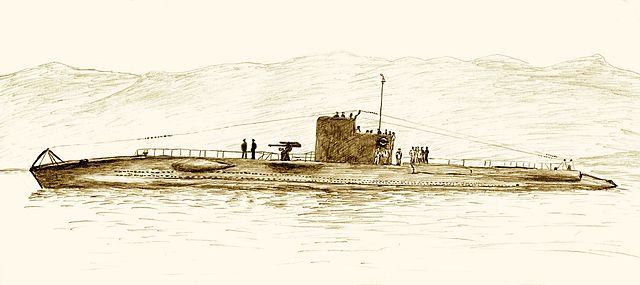
Drawing Circe
Doris:
Doris was commissioned 26 May 1928. In 1939 she was in the 10th French submarine flotilla, moved to Harwich in April 1940 to reinforce the British Royal Navy, under command of captain Jean Favreul. She arrived on 14 April but developed engine troubles in the main gas compressor. She could not be repaired in Harwich, nor in France due to the lack of spare parts, as the compressors has been designed and produced in Germany.
On 6 May 1940 she sortied on patrol in the North Sea, north of the Frisian Islands and off the Dutch coast (east entrance to the English Channel) anticiating an invasion of England. On 8 May there were five British and seven French submarines, on this patrol, but Doris was the only one unable to dive (the compressor was responsible of blowing the tanks with oxygen). Shortly after midnight, Doris was torpedoed and sunk north west of the Dutch coast (30 miles from Den Helder), while surfaced of course, by U-9 (Wolfgang Lüth) with Capitaine De Corvette Jean Ernest Marie Favreul, and all her crew. Her wreck was rediscovered in 2003.
Thétis:
Thétis was built at Chantiers Schneider et Cie, Bordeaux, and Commissioned on 24 Feb 1928. While she was fitting out at Toulon one of her compressed air tank exploded on 7 March 1929, seriously injuring a crewman. She was ventually commissioned in June 1929 after repairs, yard trials, official ones, and a test dive. Her interwar career is not known.
By September 1939, she was in SubDiv 13, SubRon 5, 1st Flotilla, 2nd Sqn. with her sisters Calypso, Circé, and Doris, based at Toulon. Twelve French submarines were to participate in an operation in Norway in 1940 to deny the Germans access to steel. Among these were the four submarines of the 13th Division. Overall command was Vice Admiral Max Horton, RN. Thétis and Calypso departed from Bizerte, Tunisia, on 23 March 1940 and sailed to Harwich, resupplied the submarine tender Jules Verne for a first wartime patrol in the Heligoland Bight and southern North Sea.
On 9 April 1940 Operation Weserübung commenced and Circé, Doris joined on 15 and 20 April Calypso and Thétis in Harwich for patrols off Norway. They were entirely dependent on Jules Verne and laked spare parts, sent from Cherbourg.
By 6 May 1940, an invasion of the Netherlands was featred and Horton ordered all available submarines to patrol these waters, the four Circé class joining four British, two Polish submarines. Their task was to intercept German U-Boats operating in the area. However soon the Battle of France shattered this routine and on 4 June 1940, Jules Verne and the class departed Harwich for Brest in France. As Italy declared war in turn on 10 June 1940 and be informed of German ground forces approaching Brest on 18 June 1940, the four subs evacuated at 18:00. At 18:30, Jules Verne and 13 submarines headed for Casablanca in French Morocco. They arrived on 23 June. Two days later they learned about the armistice. SubDiv 13 was now based at Toulon nominally, but assigned overseas at Casablanca, now under orders of Vichy France.
By 1 November 1942 Thétis was back at Toulon, under guard, unarmed and unfueled. Operation Torch meant the Armistice Commission authorized reactivation of Vichy French vessels at Toulon. However Thétis was not ready to depart when the Free Zone was invaded on 27 November 1942 and she was scuttled to prevent seizure. Later the Germans seized her, ans she was handed her over to the Italians, refloated on 1 March 1943 by the Mario Serra Company of Genoa but after seeing her general state, not repaired. After September 1943 the Germans handed her over to Vichy French authorities on 4 July 1944, but the latter left her at her moorings. Eventually she was presumably sunk during an allied air raid on 6 August 1944. She was refloated in September 1945 and scrapped.
Circé:
Circé was built at Chantiers Schneider et Cie, Chalon-sur-Saône, France, Laid down on 15 January 1924, Launched 29 October 1925 and Commissioned on 29 January 1927, 22 March 1929, or June 1929 due to her delays, fixes and tests. By June 1935 she was part of the 5th Submarine Squadron until then, and moved to Casablanca in French Morocco to be reassigned to SubRon 3d. By September 1939, Circé was reassigned to SubDiv 13, SubRon 5, 1st Flotilla, 2nd Squadron. In her unit were her sisters Calypso, Doris, and Thétis, all based at Toulon in France.
In 1940, her unit was chosen to constitute a 13-subs strong force to intervene in Noreway under Beritish command French (Vice Admiral Max Horton). Calypso and Thétis departed from Bizerte in Tunisia by March 1940 and arrived to Harwich, meeting the tender Jules Verne. Next they sailed to Heligoland Bight, southern North Sea and commenced operations against German traffic.
On 9 April 1940, Operation Weserübung, commenced and Corcé was still operated from Harwich. On 6 May 1940 as the invasion of the Netherlands was imminent she joined four British and two Polish submarines in a patrol line off the Dutch coast to interecpt U-Boat. However with the Battle of France on 17 May 1940, it was planned to send them in Africa. By night Sibylle approached Circé to attack as she was submerging, believing she was an U-Boat, until realizing her mistake.
On 4 June 1940, Jules Verne and the 13 French submarines of Harwich departed for Brest, and after a short refit, departed on 18 June 1940, for Casablanca, reached on the 23th.
After the armistice two days later, Circé, Calypso, and Thétis (SubDiv 13) were in Toulon, but ordered to redeploy to “Africa and the Levant” station by Admiral Darlan.
In December 1940 Circé was disarmed in Bizerte. On 8 November 1942, with the Allied landings in French North Africa she was reactivated but never ready to go into action as the fight ceased on 11 November, Darlan chossing to join the Free France. On 14 November the French maritime prefect of the 4th Region at Algiers ordered French naval forces at Bizerte to gather in Algiers, but this was countermanded by Vichy French authorities there, which ordered them instead to sail to Sidi Abdallah Arsenal at Ferryville, Tunisia, then under German control.
Thus, the Germans seized Circé on 8 December 1942, over to the Italians on 22 December 1942. She was renamed FR 117 but never made operational. She was scuttled at Bizerte on 6 May 1943, raised by the Allies but not repaired, and stricken on 18 August 1947.
Calypso:
Calypso was also built at Chantiers Schneider et Cie, laid down on 7 February 1924 as “Q126” launched in January 1926,, commissioned either in May 1928 or June 1929 (varied sources). Her career was the same as her sister Circé. Disarmed at Bizerte in December 1940 and captured there by the Italians on 8 December 1942. Stricken, never recovered, towed to Bizerte and sunk here during an Allied air raid on 31 January 1943.
⚙ Circé class specifications |
|
| Dimensions | 62.48 m long, 6.20 m wide, 3.99 m draft. ( feets) |
| Displacement | 615 t. standard – 776 t. Full Load |
| Propulsion | 2 shafts Schneider Diesels, 2 EM, 1250/1000 hp |
 Submarine Tender Jules Vernes
Submarine Tender Jules Vernes
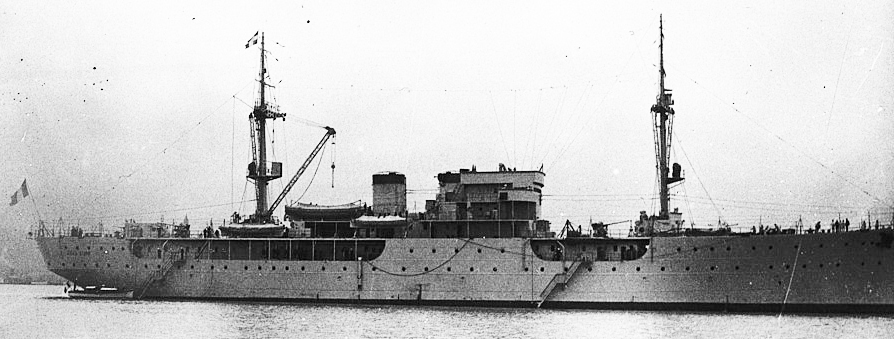
Jules Vernes in 1932 at Cherbourg, Atlantic Submarine Flotilla. During the Harwhich deployment in the campaign of Norway she tended for 13 submarines, not the 6 originally planned.
France during the interwar developed a plan to include submarine tenders for prolongated off-shore operations, but only one was built: Jules Verne.
Authorized by the Law of August 4, 1926, the submarine supply ship Jules Verne was laid down on June 3, 1929 at Lorient arsenal (West Coast). She was launched on February 3, 1931 and started speed trials on February 23, 1931. She entered service on September 26, 1932.
Jules Vernes was equipped to maintain a squadron of six submarines. She can also accommodate 15 officers and 250 men. She was first assigned to Brest, operated in the Atlantic and in the English Channel as well as the North Sea. On January 18, 1934, she came to the rescue of the freighter Saint Prosper, which had hit a rock at Raz Blanchard off La Hague. On July 10, 1935, she was the flagship of the 2nd submarine flotilla.
At the start of the Second World War, Junes Vernes was based in Oran, then in Casablanca to provide support for submarines based in Morocco. She returned to Brest then was based in Dundee in Scotland, in May 1940, to serve as a base for submarines engaged in Norway. He returned to Brest, then on June 18, 1940, he reached Casablanca with the available submarines. It was placed in armistice guarding in Bizerte in November 1940, during which time she benefited from a refit. Fr the Norwegian Operation, she lacks parts and supplies to maintain the 13 subs under her care in good conditions and because of this, when the operation ended in June, the subs back in Brest were in refit, not able to depart as the city was under threat by the advancing Germans. Some were scuttled, others were towed to Britain, joining later the FNFL. Jules Vernes led the rest to North Africa.
In March 1941, she was assigned to the Dakar submarine group (there was a lack of spare parts and resources for maintenance there) until December 1942, and was then in Port Etienne from January 1943 until September of the same year. In December 1943 she was in Dakar, then in Algiers, until September 1944. In August 1945 she was transformed into a workshop ship before leaving for Indochina.
From March 1946 to July 1955, FS Jules Verne served in Indochina as support for the amphibious flotillas, and also as transport. During this period, two refits were carried out. At the beginning of 1948 she was back in Toulon and at the end of 1952 and early 1953, operated from Uraga in Japan to support French Forces in Korea. She was back to Toulon on August 23, 1955. Placed in reserve on December 1, 1955, she served as barracks ship for the amphibious corps at Saint Mandrier. She was retired from active service in 1959. Stricken on August 1, 1961, she was BU at La Seyne in 1962.
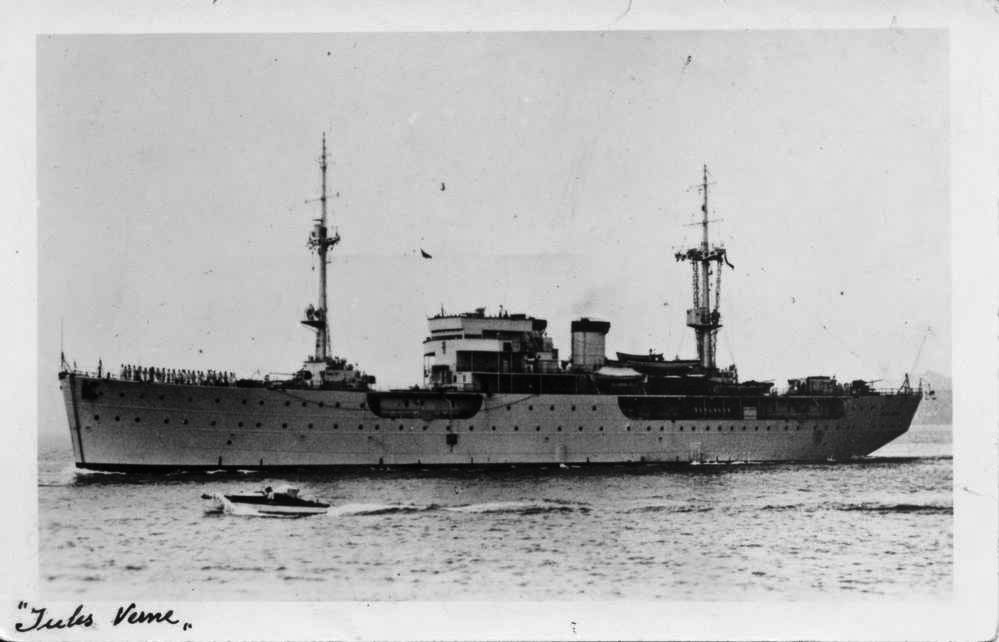
Postcard depicting Junes Vernes prewar.
⚙ Sub Tender Jules Vernes specifications |
|
| Displacement | 4,350 t w; 6,340 t fully laden |
| Dimensions | Length 122 m; width 17.20m; draft 6.75 m |
| Propulsion | 2 shafts Sulzer Diesels 7,000 hp, 16 knots, 17.2 under trials |
| Range | 18,500 miles at 11 knots or 12 000 miles/15 kts |
| Armament | 4 x 90 mm; 4 x 37 mm, 9x 13 mm AA HMGs. Wartime: 7 x 40 mm Bofors, 12 x 20 mm AA |
| Crew | 186 standard, 304 full tender complement with 12 officers, 54 petty officers, 238 ratings |
What imagined Clausuchronia if the war turned differently (uchronia)
Vestale: In September 1939, Vestale joined DesDiv 17 with Aréthuse, Vestale and Sultane, 6th squadron with SubDiv 20 (Turquoise, Rubis, Saphir, Nautilus) and 5th squadron (DesDiv 9, 10, and 11) to form the 4th flotilla part of the 4th maritime region, 4th Light Wing.
From November 20 to December 2, 1939, SubDiv 17 took part in a joint exercise with the DesDiv 11 (Milan, Bison, Aigle) and TopDiv 12, based in Tunis by December 3-8 and Bizerte.
The reorganization of September 1940 integrated SubdDiv 17 within the 3rd Submarine flotilla, together with the 6th Light Squadron.
From December 1, 1941 to January 15, 1942, La Vestale was refitted in the floating submarine dock of the Arsenal of Sidi-Abdallah. She started her post-fix trials on January 25, and official trials in January 26-28, and was back to operational status on February 12, 1942 making her firt patrol on February 19-March 1, 1942.
From April 13 to May 2, she trained with Arethuse, destroyer Mogador and the 12th TBD division.
Two years later, on May 12 – June 10, 1944, she took part in the “Harmattan” maneuvers with Arethuse, Saphir and Nautilus.
In November 18-27, 1944, with Atalante she took part in an ASW training with DesDiv 7 (Vauquelin, Chevalier Paul, Tartu).
On February 13-March 20, 1945, she was in refit at the Sidi-Abdallah Arsenal, on trials in March 31-April, 1 and in patrol from April 19 to May 3, 1945.
By November 13-18 and 20-25 SubDiv 17 (Atalante, Vestale, Sultane) made two ASW training sessions with DesDiv 12 (Marceau, Desaix, Kléber).
In March 29 – April 5, 1946, she trained off the Levant with DesDiv 5th and the 1st TBD. From May 25 to June 2, 1946, Vestale and Sultane made another ASW training with DesDiv 7 and Vestale was placed in reserve by September 9, 1946, while SubDiv 17 was dissolved. She was disarmed on September 21, 1946, discarded in October 5, 1946, placed Lake Bizerte by September 1, 1948 and latter sold for scrap.
La Sybille: The reorganization of September 1940 had SubDiv 16 16th attache to SubRon 5 based in Cherbourg. From January 17 to March 24, 1941, La Sibylle was overhauled at basin n°3, Arsenal de Cherbourg. Trials were done on March 8, 1941, official tested on 9-11th, post-refit March 13-27 and she made a first patrol on April 5-15, 1941. By March 17, 1942, by decree she was reassigned to the Northern Light Squadron (ELN) based in Dunkirk. SubDiv 16 left Cherbourg for Dunkirk, arriving on March 19, 1942.
From February 17 to 24, 1943, La Sibylle and Orphée took pat in ASW training with DesDiv 8′ Kersaint and Cassard and again on June 17-26 with Antiope. On October 9-15, 1943, more training followed.
On March 22-May 3, 1944, Sibylle was refitted on basin No. 4 of, Brest Arsenal followed by trials on May 13, 1944.
She made a post-refit cruise in the Iroise Sea and and Bay of Biscay in May-June and returned to Dunkirk by June 1944. She took part in the “Entente Cordiale 45” sortie with Antiope, Ajax and Pasteur, and was only disarmed after the disolution of SubDiv 16 in 1946, decommissioned on January 16, stricken on the 31th and sent to Cherbourg in February to be stripped of all salvageable equipment and BU from 15 June in Caen.
La Psyché: Psyché participated in securing of the Strait of Gibraltar. The reorganization of September 1940 assigned the SubDiv 18 to the 2nd submarine flotilla, 4th squadron based at Mers-El-Kébir. From August 21 to September 30, 1941, Psyché was refitted in a floating dock. After additional work and trials on October 12, 1941, she carried out her psot-overhaul trials from October 13-15, and final fixes in October 17-31, carrying out her first post-refit patrol on November 5-15.
From June 22 to July 2, 1943, Psyché and Oréade participated in ASW training with destroyers Le Terrible, Le Triomphant, and L’Indomptable (DesDiv 10).
From March 21 to April 30, 1944, Psyché had another lfloating drydock refit in order to hold out until her decommissioning at the end 1945. After trials in May 12-14 and exercizes on 16-30 May, she made a patrol from 7 to 17 June 1944. From September 23, to October 3, 1944, Psyché and Oréade made an ASW training with L’Alcyon and Le Bordelais TBs.
By March 7-18, 1945, Psyché took part in ASW training with L’Eveillé and L’Alerte TBs.
From April 12 to 21, 1945, same with the destroyers Valmy and Verdun.
Psyche was placed in partial decommission by September 7, 1945, along with Oreade, leading to the dissolution of SubDiv 18. Stricken on September 19, 1945, she was towed to Toulon on October 7, 1945 and discarded as Q-174. Anchored in Bregaillon she was taken in two for depmoition by September 5, 1948.
–>
630 tonnes class submersibles (1929-34)
When it appeared clear that the 600 tonnes were too cramped, a new standard was defined was raising the bar higher in the 1926 naval programme. Two were authorized this year, one in 1927 and two in 1929. Four yards provided them, so they varied specs in between, more so than for the 600 tonnes. They were all based on mixed Commerce raiding/Defense boats, with six main torpedo tubes, including three in the bow, one fixed internal aft, two in the upper hull, external, plus an external torpedo tubes bank with 40 cm torpedoes (15.7 in) designed specifically for commerce raiding.
The same 3-in (75 mm) deck gun was provided, but it was the 35-caliber Schneider M1928. Also, the AA was often reinforced, from a single 8 mm Darne LMG to a single 13.2 mm and later twin 8 mm Darne. Diving time was improved, longitudinal transverse stability, and well as internal arrangement and habitability, although neither their performances or diving depth were signficalty improved, but their radius of action. Orders were also larger: Six to Schneider for the Argonaute class, nine for the Diane class (Augustin-Normand and AC Seine Maritime, and six for the Minerve class (see later).
Only the Minerve class ordered in 1934 showed by the Admiralty a true interest in standardization: They were all ordered from various yards: Dubigeon (Nantes), Cherbourg, Augustin Normand and Seine Maritime. The last, Cérès, was launched in 1938 and completed as the war was looming. They inaugurated a triple external bank with 15.7 in TTs for commerce raiding and a stronger AA with a twin 13.2 mm AA. Unlike the former boats they had also three bow tubes and two aft ones. The two Orion class (1931) were oddballs with a different machinery arrangement. Most of them, like the previous 600 tonnes were scuttled or sunk in action (in the hands of Vichy french) during Operation Torch and its aftermath (German invasion of the free zone).
 Argonaute class submersibles (1929)
Argonaute class submersibles (1929)
Argonaute, Arethuse, Atalante, La Vestale, La Sultane
This class of sixteen 630 tonnes were alternatively built with Normand-Fenaux plans for 9 of them (Diane class), Schneider-Laubeuf plans (5 Argonaute class) Loire-Simonot plans for the two remaining (Orion class). The Argonaute class were still called “Sous-marin de deuxième classe dit de 630 tonnes”, designed by Eugène Schneider et Maxime Laubeuf (yes, the one that started the French submarine lineage), and they were double-hulled, and they inaugurated the type. They had improved transverse stability submerged, same operational depht as the previous 600 tonnes, but suerior habilitability. Radius was slightly increased also at 4000/2500 nm respectively at 10/13 kts, or 85 nm submerged. They had three TTs at the bow, a twin external traversing 21.7-in mounting aft of the CT, one fixed external aft TT and seven torpedoes ad a twin 15.7-in external mount aft to deal with merchant ships. They were armed with the classic 3-in/35 model 1928 (75mm) gun forward and single 13.2 mm Hotchkiss AA aft, plus two 8 mm ones aft of the CT.
Surface tonnage was 630, 798 submerged, for an overall lenght of 63,6 m, 5,18 m in width, and 3,91 m draft. Top speed surfaced was not impressive at 14 kts, and 9.20 submerged. Aferty depht was 80m. The standard crew comprised four officers and 38 ratings. The mix of 550 mm and 400 mm torpedo tubes was typical of their dual role, deployed against warhips and commerce alike. The puny 75 mm was not helpful however in a surface engagement. Of the whole class, only Argonaute was lost in action.
Argonaute:
Built at Chantiers Schneider à Chalons sur Saône (Eugène Schneider et Maxime Laubeuf) she was a typical double-hull type launched 23.05.1929 and commisioned on 01.06.1932. When war broke out in September 1939, she served with SubDiv 19 19th, 3rd region (Premar III), based in Toulon. On June 25, 1940, she still served in the sam unit with Galatée, Sirène and Naïade.
On December 5, 1940, dueing an exercize she collides with the torpedo Mameluck and disarmed on December 17, placed in armistice guarding (unfuelled, disarmed). In June 1941, she is rearmed to be assigned and by December 1941 sent Oran joining SubDiv 12, with Diane.
By November, 8, 1942, 02:50, Argonaute (Lieutenant Véron), Actéon (Lieutenant Clavières) and Fresnel (Lieutenant Saglio), the latter two of SubDiv 5, are ordered to reach Oran as soon as the Operation Torch landings begin. They leave quai Lamoune at 03:15 to 03:45, Argonaute heading east, Actéon east of Cape Falcon and Fresnel to the west.
Argonaut while at periscope depth, managed to arrive on the landing area, spots HMS Furious in the afternoon, but she is detected by HMS Purchase at 3:17 p.m. which start a sonar attack and depht charge her until she sank at the bottom at 3:31 p.m. A lot of debris roses to the surface to attest the kill. There were no survivors.
Aréthuse:
Aréthuse on September 1939 was in SubDiv17, SubRon 6, 4th Flotilla, Premar IV in Bizerte with Vestale, Sultane and Atalante. She was being refitted in Toulon when the war broke out and by June 1940, she was still Toulon. On December she headed for Dakar with Vestale (Corvette Captain Vidal), Sultane (Lt. Madec) and the Aréthuse (Lt. Gardair). In February 1941 Aréthuse is back Casablanca to repair her main electric motor. On February 10 she heads for Morocco for first trials, and by April a test dive to 60 m. Aréthuse and Thétis were relocated to Safi, then Agadir, Mogador, Safi and Casablanca on 2 May. Until the 23, she is in Agadir and in June Port-Lyautey, and by June 21, Lieutenant Jodon takes command.
On August 6, Aréthuse and Sultane left Casablanca for Port-Lyautey and Safi in September, then Agadir and back to Casablanca.
On March 4, SubDiv 17 is reloctaed at Toulon for an overhaul of all submersibles. In April 1942, Aréthuse is disarmed but rearmed on August 31, 1942 and on September 30 her unit is relocated set sail to Casablanca. By November she is heading for Dakar with Vestale, Sultane and Atalante and saw nothing of the allied landings.
On April 1, 1943, she is returned to Oran (Corvette Captain Fournage) with Casabianca, Glorieux, Marsouin, Vestale, Sultane, Antiope and Perle while Amazon is being refitted in the US. They are all officially under Vichy French control.
Because of this, on April 20, 1943, Aréthuse while in exercise off the Bay of Arzew is shelled by the escort of an allied convoy. On June 04, 1943 at 10:45 am, under orders of Lieutenant Jean Maximilien GOUTTIER she fired two torpedoes, on the “Dalny”, a French steam freighter of 6,672 ton, hit and badly damaged near Porto Cervo (Sardinia). At some point she is now under FNFL control.
In September 1943, she carried equipment and food to Ajaccio (to be liberated by the Free French) with Perle and on September 28, 1943, disembarked 5 agents and picked up 7 at Cap Camarat. On November 9, she is part of the Algerian Submarine Group in Oran and by January 3, 1944, she replaces Casabianca. By the end of 1944, she is a training vessel with Argo, the Junon and Narval. L’Aréthuse is used at the listening school in Freetown and Takoradi, Dakar. In July 1945, she is in La Pallice, French Riviera, stricken on March 25, 1946 and BU.
Atalante:
Atalante (Q-162) by September 1939, is in SubDiv 17, 6th Squadron, 4th Flotilla, Premar IV in Bizerte with her sisters but she remains in Toulon when the war broke out, due to a refit, disarmed from June to December 1940. By January 20-27, 1941, after being reactivated she is sent to Casablanca, and departed for Dakar, reached on February 1941. Due to issues with her Diesel engine, she is sent for repairs back in Agadir, and then Casablanca, after stopping at Safi with Vestale. She carried out patrols in the Atlantic and by November 1942, she is located at sea between Casabianca towards Dakar with Vestale, Sultane and Aréthuse and did not intervened. By mid-November 1942, with Orphée she is at the Oran submarine base. She is used for the listening school in Morocco, Dakar and Freetown and by November 1943, with Glorieux, Marsouin and Amphitrite, she is back at the Casablanca submarine base, and disarmed in Oran in May 1944. By August 1945, she is sent to La Pallice under command of Lieutenant Mescam to be deactivated, and is stricken on March 25, 1946.
La Vestale:
La Vestale was laid down at Schneider shipyards (Chalons sur Saône) on January 30, 1931. She was launched on May 26, 1932, commissioned on September 18, 1934. On September 1939, she is part of the SubDiv 17, 6th Squadron, 4th Flotilla in Bizerte with Sultane, the Atalante and Arethuse. On June 18, 1940 she is in Toulon. By February 1941, she was in Dakar with a damaged Diesel, repaired locally. On June 25, Corvette Captain DEROO replacing VIDAL in command and at the head of SubDiv 17th. By April 1942, she is in Oran and on November 1942, she was in trasnit between Casablanca to Dakar with Sultane, Atalante and Aréthuse. By May 18, 1943, she sails from Oran for Algiers with a convoy (fleet tanker “Drôme”, escorted by three British RN patrol boats and a minesweeper) and they reach Ténès. On May 19, 1943 Vestale under command of Lieutenant ATTANÉ, is attacked at night by the destroyer HMS “Wishart”, mistook for an U-Boot, with one killed, several injured. The gunnery had her stern lost and she is towed to port for repair, but soon placed in special reserve and by November 1943, relocated in Oran.
In 1944, Vestale was repaired and operaional, with Sultane, Amazone, Curie and Doris for the local FNFL.
In August 1945, as part of the Oran Submarine Group, she is placed in reserve and by August 14, 1946, stricken and sold for BU.
La Sultane:
Sultane was commissioned on May 20, 1935. By September 1939 she was in SubDiv 17 with Aréthuse and Vestale, SubRon 6, with DesDiv 20 (Saphir class) and SubRon 5 (Desdiv 9, 10, 11) with the 4th flotilla, 4th maritime, 4th Light Wing. She is then refitted in Toulon and still is by June 18, 1940. With the attack on Mers-el-Kebir on July 3, group B is prepared to set sail (Iris, Venus, Sultane, Sirene, Pallas, Cérès), with instruction to reach Oran, joining Group A (L’Espoir, Conquérant and Archimedes) and attack on sight any British warship encountered with as prime target, HMS hood.
They were deployed south of Ayre Island, towards the coast of Algeria between Ténès and Dellys, before heading to Oran. They arrived on July 4th in total radio silence but orders changed and they were ordered back to Toulon the next day, to defend against an expect British attack there, which never materialized, although it is awaited still on July 9 and Galatea, Sirène, Sultane, Diamant and Perle are anchored on high alert off Les Vignettes. Pallas, Iris, Vénus and Cérès are stationed 20 nautical miles south of Toulon.
On July 10 a British convoy is reported en route to Gibraltar and they are recalled to Toulon.
Sultane is disarmed in October 1940, but reactivated in December 16 to head for Casablanca with Archimède (Lt.V. Attane), Vestale (Capt.V. Vidal) and Aréthuse (Lt.V. Gardair). In January 1941, she is in Dakar and in August in Casablanca, then Port-Lyautey, Safi, Agadir and back to Casablanca. By March 1942, she is refitted in Toulon.
By October 1942, Sultane and Atalante taked part in exercizes with 2nd Light Squadron and are redeployed to Agadir, then Dakar in November.
SubDiv 17th (Vestale, Sultane, Atalante, Aréthuse) replaces SubDiv 16 to Casablanca, on November 7th, so they missed Operation Torch.
By March-May 1943, she patrolled the Mediterranean. By April 28, 1944, now under the FNFL, Sultane lands 4 agents and picked up 1 off Barcelona.
On May 9, 1944 at 8:50 p.m., she spots and fired three torpedoes at UJ 6070 (formerly Cetonia) and M 6027 off Villefranche but missed. On the 12, she fired three torpedoes at M 6020 (ex Dédaigneuse) and M 6027 (ex Givenchy) off Cap Antibes but missed again. On the 15th she is mistaken for an U-Boat and attacked by US plans despite recognition signals.
On June 6, 1944, she embarked 4 agents off Barcelona and on the 15th, takes part in Operation Anvil Dragoon.
On August 20 she is the first to enter Marseille. By December 1944 with other subs she is used to supply electricity to Toulon, crews on leave.
On October 30, 1945, she is relocated from Oran to La Pallice, then Lorient, La Pallice, Brest, Casablanca in February 1946, Algiers in May, Brest in july, Le Havre, Cherbourg she she is desarmed and stricken on December 26, 1946.

Blueprint reconstruction
⚙ Argonaute class specifications |
|
| Dimensions | 63.4 m long, 6.40 m wide, 4.24 m draft. ( feets) |
| Displacement | 630 t. standard – 798 t. Full Load |
| Propulsion | 2 shafts Schneider-Carel Diesels, 2 electric motors, 1300/1000 shp |
| Speed | surface/sub 14/9 knots |
| Range | Practical depth 80 m |
| Range | RA: 7,000/70 nautical miles surface/sub @ 7kts, oil 65 tons. |
| Armament | 6x 550 mm TTs (21 in), 1x 3-in/35 M28 (76 mm), 1 MG. |
| Crew | 41 |
 Diane class submersibles (1930)
Diane class submersibles (1930)
Diane, Meduse, Antiope, Amphitrite, Amazone, Orphee, Oreade, La Sybille, La Psyche
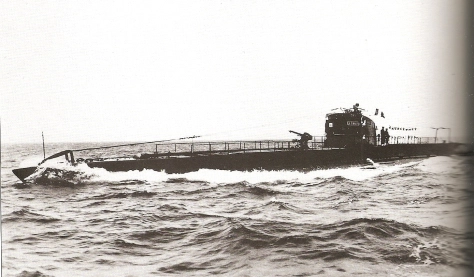
La Sybille underway at sea (src unknown, via clausuchronia)
The Diane class was the largest of the 630 tonnes, with 9 boats, built on the Augustin-Fenaux type, built at Augustin Normand and Chentiers Worms. They are built in four sections, 1926 (law of April 29, 1926), 1927 (law of December 19, 1926), 1928 (law of December 27, 1927) and 1929 (law of December 30, 1928). Technically, they obeys to the same spec and are identical to the Argonaute class. They went through the same purgatory as other French subs, being sunk by error or voluntarily by allied ships, scuttled, or survived and served with the FNFL.
Diane:
Second of the name (there was a 3rd one in the 1960s), Diane was built at Augustin Normand, Le Havre (ordered 1926, laid down 4 jan 1928, launched 13 may 1930, comm. september 1932). She was in service on September 1932, armed in Cherbourg. By September 1939 she is part of SubDiv 14, 2nd Squadron, 6th Wing, in Oran. By June 1940 she trained with Danaé, Ariane and Eurydice and patrolled the Madeira sector, Canary islands. On July 3, 1940 Mers-El-Kébir is attacked ans shi is put on full alert, departing with Diane and Eurydice, deployed in the outer harbor and set sail at 5:54 p.m. just before the start of the British cannonade.
Diane was posted 3.5 nautical miles west of the Rocher de l’Aiguille (now Wilaya, Oran) but not deployed in time, and patrolled for the next night until July 4, 1940, back in Oran. She returned by August-September in Toulon and was back later to Oran and from October 1941 to May 1942 she is disarmed. By November 1, 1942, she is reactivated as part of SubDiv 12 in Oran but scuttled on November 9, with Danaé, Ariane, Cérès and Pallas.
Refloated on January 1, 1944, her repairs are never completed and she is stricken and later BU.
Méduse:
She is built at Augustin Normand, Le Havre, laid down on 1st janr 1928, launched 26 august 1930, commisioned by september 1932. By September 1939 she is part of SubDiv 18, 2nd Squadron, 6th Wing in Oran with Psyché, Oréade Amphitrite, detached from Toulon to Morocco. She was back in Brest by June 15, 1940, with five divisions and the Jules Verne after an operation off Norway and the Netherlands. She is evacuated due to the German advance back to the Mediterranean. On June 25, she is back in Oran. On July 3, 1940 (Mers-el-Kébir attack) she made a sortie with Amphitrite and Amazone, patrolling 20 nautical miles around Casablanca.
On July 13, she relieved Casabianca, Sfax, Poncelet presence 20 nautical miles off the port.
On October 28, 1940, with Thetis and Amphitrite, she is reassigned to DesDiv 13, now with Orphée. by November 1942, she is reassigned to SubDiv 17 and sailed out for action with Psyché, l’Oréade and l’Orphée, of SubDiv 18, setting sail on the 8th (Lieutenant de Vaisseau Roy) for sector 2, El Hank. There, she is spotted and shelled seaplanes of USS Philadelphia, but escaped undamaged.
At 09:50, she spots at pericopic immersion the battleships USS Massachusettsfollowed by two heavy cruisers, Tuscaloosa and Wichita.
At 10:00 am, she launches four torpedoes on the battleship, which narrowly dodged them. Méduse moved away and returned to Casablanca to resupply but when surfacing in front of the port, she is spotted and shelled, taking a hot near the bow. Lt.V. Roy decides to proceed anyway, reloading his batteries under El Hank Fort, but his boats is machine-gunned by aicraft, with three wounded. He then headed for Safi at 6:20 p.m., disembarked the wounded and attempted to carry out repairs. On November 9, she is again spotted, shelled and damaged, made a crash dive, and resurfaced at 6:30 p.m. south of Cap Cantin. Dueing the night she is forced to dive again to escape an incoming PT-Boat. The captain then decised to go to Mazagan (El Jadida) but the boat now list by 20° to starboard with two punctured ballast tanks and at 06:40 he decided to ground his boat and evacuate, then scuttle Méduse by opening all water intakes.
Antiope:
Antiope by September 1939 was part of SubDiv 16, Premar I in Cherbourg, with Orphée, Amazone and Sibylle. On March 12, 1940, she set sail with “Jules Verne” for Harwich as part of the 10th Flotilla under command of British Vice-Admiral HORTON for Norwegian patrols and later off the Dutch coast, Operation Hartmut. On May 20, she launches three torpedoes by mistake on Sybille, which manages to avoid them. By early June she is back to Brest, and on June 18, still in repairs when orderes came to sally out or be towed to avoid capture, those who cannot navigate are scuttled.
Jules Verne set sail with 13 other submarines for Casablanca, arriving five days later and by June 25, the armistice is entering force. By July 3, it’s Operation “Catapult”. Fearing an attack on the battleship Jean Bart, Amazone, Meduse, Amphitrite created a patrol area 20 nautical miles around Casablanca.
Antiope is in Dakar on October 1940, and back to Casablanca with Sibylle Orphée, Amazone and departs in April 1941 for Toulon to be disarmed. She would later return to Casablanca and Dakar, and by September 1942 she was at sea from Dakar with convoy D-56. She stayed in Port-Étienne. She was sent back to Dakar with Amazone and took no part in the operations against the allies (Op. Torch) and instead she is disarmed in Dakar on 08.11.1942, inactive until the end of the war. She was discarded in 1946.
Amphitrite:
She served in AOF (Dakar) from February 1942 to November 1942. On the 8th of November 1942, having just arrived from Dakar and no longer having enough combustible to flee, at 08:00 she is bombed and badly damaged by Western Task Force Helldiver. She is partly evacuated, some remaining aboard firing with their AA. She was refloated on March 12, 1943. The extent of the damage combined to the weakness of the port resources lead to place Amphitrite as well as the other submersibles of Casablanca in “special reserve”. All recoverable material is is used for her maintenance in good condition. But she is never put back into service and disarmed in May 1944. She was BU after the war.
Amazone:
She was completed on 12 Oct 1933. No noticeable event in the interwar. 11 May 1940: Under command of Lt. R.H.G. Richard, fires two torpedoes at an unidentified submarine off the Dutch coast, possibly either U-boat U-7 or HMS Shark reported being missed by torpedoes. Vichy French service. She escaped from Casablanca to Dakar during Operation Lila (German operation on Toulon) and scuttling.
On 26 Feb 1943, Amazone arrived at Bermuda from Dakar and departed later for the Philadelphia Navy Yard for a refit. She left on 14 Oct 1943 for New London, Connecticut, and after a post-trials cruise and training, headd on 1 Nov 1943 at Bermuda and conducted exercises until 12 Feb 1944.
In October after several patrols, she was refitted in Philadelphia NyC, and New London, Connecticut, but was grounded underway on 15 Oct 1944 inside Fort Pond Bay, Block Island sound. Refloated, she was towed to New London, and Philadelphia NyDfor repairs by USS ATR-8. On 7 December, she headed for Key West in Florida, and then to Oran, Algeria, via Bermuda and Ponta Delgada in the Azores. and next to Casablanca, French Morocco, staying there until the end of the war. Stricken 26 April 1946.
La Psyche
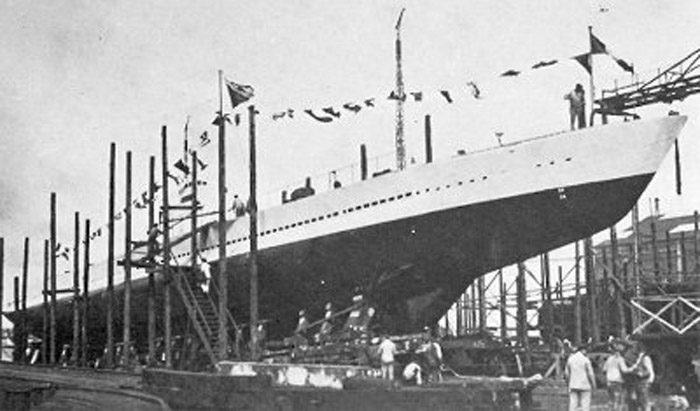
La Psyché (Q-174) was laid down at Auguste Normand shipyards (Le Havre) on December 26, 1930, launched on August 4, 1932 and commissioned on December 23, 1933. On September1933, she was in exercises with “Glorieux” and later trained with the minelayer “Pollux” in 1934, and then was relocated to Dunkirk. By April 1934, she was overhauled at Cherbourg and operated by November 1934 in Scotland. By September 1939 she was with SubDiv 18, 2nd Squadron, 6th Wing, in Oran, with Meduse, Oreade and Amphitrite.
She was reolocated to Dakar on March 23, 1941 under command of Frigate Captain LE FLOCH, from Bizerte after a new refit, and with the sub-tender Jules Verne. By January 7-19, 1942, she was in Safi and in February in Port-Lyautey. By November 1942, she was in the Oran Sea, off Casablanca with Oreade. on the 8th she was deployed against the allied fleet with Méduse and Orphée.
That day at 06:15, USS Ranger and USS Suwanne‘s air groups and attacked ships presents in Casablanca at 07:10, notably using Helldiver bombers and Psyché (Lt. GUITTET) was sunk after being being hit at 08:15: captain, two officers, eight crewmen were killed and the rest escape, many being wounded. Six other submarines were sunk that day: Sidi Ferruch, Sibylle, Oréade, Amphitrite, Méduse and Conquérant.
La Sybille
La Sibylle (Q-175) was built at Ateliers et Chantiers de Seine Maritime du Trait, laid down on January 10, 1931, launched January 28, 1933, commissioned December 22, 1934. She was with her sisters in SubDiv 16 (Orphée, Antiope, Amazone) attached to the 1st region, Cherbourg. In 1940 she was back in North Africa and in 1942, in Oran.
By March 12, 1940, she sailed with Jules Verne for Harwich, commenced operations off Norway on the 22th 1940 as part of the “1st Flotilla” (Vice-Admiral Horton) and later patrolled the Dutch coast. She took part with the allies in Operation “Wilfred” from Dundee (Scotland). By June 4, 1940, she returned to Brest, and was evacuated to Dakar in October.
On March 1941 Desdiv 16 lost “Sibylle”, disarmed in Toulon. By November 1942, she was back in Dakar with in addition, Amphitrite and Perle.
With Operation ‘Torch’ she sailed at 07:04, under Lieutenant Commander Kraut for sector 5 in front of Fédala where Méduse, Amazone, Antiope”and Orphée were deployed to monitor the outskirts of Casablanca. On the 8th, she was lost en route, probably hitting a mine off Fédala, after torpedong and sinking a US troop transport.
Oréade:
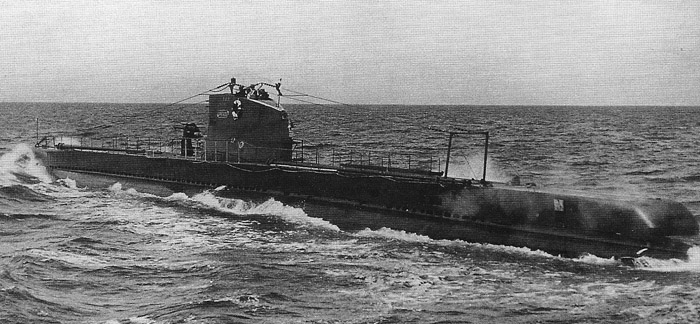
1937-41 part in research. After having operated in the Canary Islands, Oran, Morocco and in AOF, on 08.11.1942, at 08:15, Oréade sets sail from Casablanca, when she is bombed and strafed by USN Helldivers during Operation Torch, from the Western Task Force. One officer is killed on the bridge and EV GUILLOU takes command, but the submarine sank in the harbour. Oréade is Refloated on 10.06.1943, put in special reserve on 29.09.1943 in Casablanca and condemned in June 1944, removed from the list on 26.03.1946.
Orphée:
1937-45 part in research. On 16.10.1945 around 02:30 Orphée is boarded by the trawler JOSÉ CARMEN who was making a parallel route. The latter sank after half an hour of towing in front of Mazagan.
On Sunday March 3, 1946 at 11:20 a.m., following an abnormal concentration hydrogen from the batteries, an explosion took place on board while in Casablanca. Access panels will be closed for avoid any intake of fresh air and opened on Monday March 4 at 8 p.m. Two sailors died in the accident, four more injured. On 25.03.1946 Orphée is stricken.
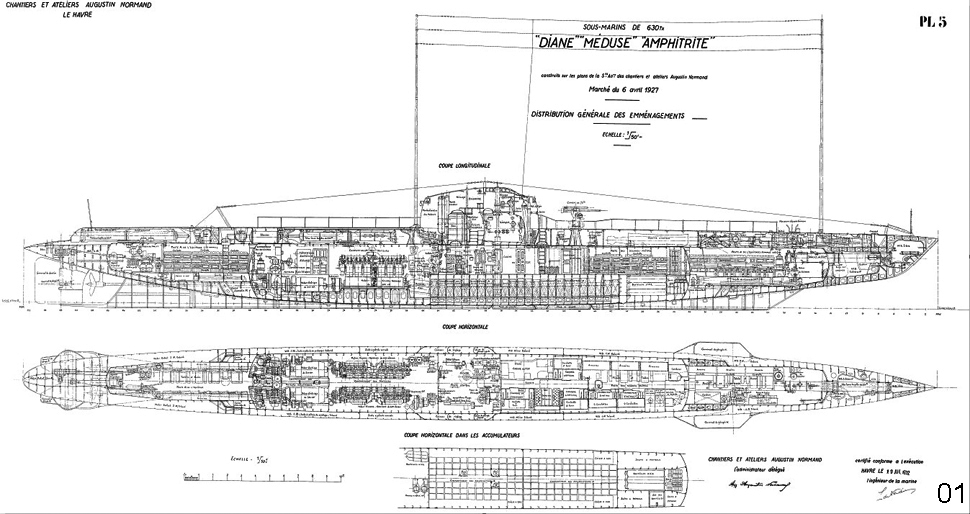
Plan of Méduse, original archives
⚙ Diane class specifications |
|
| Dimensions | 64.40 m long, 6.20 m wide, 4.30 m draft. ( feets) |
| Displacement | 571 t. standard – 809 t. Full Load |
| Propulsion | 2 shafts Normand-Vickers Diesels, 2 EM, 1400/1000 shp |
| Range | RA: 4,000 nmi/10 kts or 85 nmi/5 kts sub. |
 Orion class submersibles (1931)
Orion class submersibles (1931)
Orion, Ondine
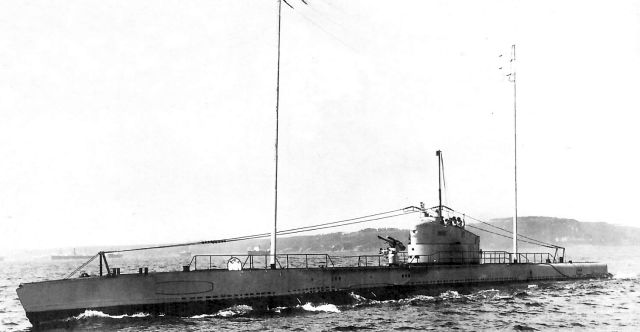
Ondine – Musée de la Marine
The Orion-class submarines were ordered in 1928 (1928 naval programme) on a Loire-Simonot design, built in Loire-Dubigeon, as a variant of “630 ton” boats. They measured 219 ft 10 in long overall, 20 ft 4 in in beam, 14 ft 5 in in draught. They were capable of diving at an operation depht of 260 ft. Surfaced displacement was 558 tonnes (549 long tons), submerged displacement 787 tonnes (775 long tons). They were propelled on the surface by two diesel engines for a total output combined of 1,400 hp (1,044 kW) and 14 knots (26 km/h; 16 mph) surfaces. Ateliers et chantiers de la Loire à Nantes
They were assisted by two electric motors with rated for 1,000 hp (746 kW) total, foe underwater drives. Their electrical propulsion allowed them to reach 9 knots (17 km/h; 10 mph) submerged. Operational range was 4,000 nautical miles (7,400 km) at 10 knots (19 km/h), down to 82 nautical miles (152 km) at 5 knots (9.3 km/h) submerged. They were armed with a single 75mm/35 M1928, single 13.2 m and twin 8.8mm on the rear kiosk platform. Six 550mm Torpedo Tubes: 3 at the bow, one external tube aft, a twin external bank for seven tubes in all. Also two 400mm Torpedo Tubes external revolving bank. Equipments included an hydrophone.
She had a mediocre habitability and was Handicapped by the 3/4 fuel stocks on the exterior holds. Commanders since 1931: LV CHATELLIER, PETITOT, CABANIE, DROGOU and from 07.01.1939 to 07.03.1940: LV VICHOT. First master Serge VIGNALAT. After operating in the Mediterranean and in the Atlantic, she was in great refit in Cherbourg just as the Germans arrived. Without engine she is towed by a Belgian tug to Southampton (18.06.1940), moved to Portsmouth on 20 June, seized later there on 03.07.1940. Part of the crew rallied the F.N.F.L, set for a return to France, opposed by part of the crew. Cdt VICHOT eventually committed suicide on July 25, 1940. She could not be rearmed and was used for spare parts for MINERVE and JUNON while the crew went to the sloop CDT DOMINÉ. Condemned in 1943 she was cannibalized for spares and later BU. She was only stricken on 26.03.1946.
FS Orion
Orion was ordered on 27 December 1927, laid down 9 July 1929, launched 21 April 1931 and commissioned on 5 July 1932. Both were built at Ateliers et chantiers de la Loire, and Dubigeon Nantes (Simonot type double hull, Q165, 166). Ondine in 1939 was based in Toulon and patrolled the Canary islands in search of U-boat supply ships deployed there before the war. With Minerve, Orion and Junon was part of the 12th D.S.M., 2nd Squadron, 6th Wing, based in Oran. In 1940 like her sister she was overhauled in Cherbourg with engines removed and batteries ashore but on June 18, 1940 she was towed to England to escape capture, under order of Chief Petty Officer Pigamo.
On June 25, she was part of the sub fleet refugee in Britain with Minerve (LV Bazin), Junon (LV Jaume), Orion (LV Vichot), Ondine (LV Bourgine), Rubis (LV Cabanier), Surcouf (CC Martin) and unfinished Creole. On July 3, 1940 Operation Catapult had her seized by the Royal Navy in Portsmouth (without resistance). She was commanded by Free French Lieutenant de Vaisseau Bourgine by July 1940, then 1st class Vaisseau Ensign Vignalats, Rossignol in August 1940 and, Ensign de 1st class Cockquenet. But she was never made operational, and instead cannibalized in favor of Minerve and the Junon, stricken in 1943, BU in 1944 or 1945.
FS Ondine
Ondine was ordered on 27 December 1927 like her sister, but laid down on 30 August 1929, launched 4 May 1931, but commiioned the same day, on 5 July 1932.
Nothing notable in the interwar. In 1939, she left Toulon and operated in the Atlantic, where she monitored the Canary Islands, looking for German supply ships. She was then part of the 2nd squadron, 6th squadron, based in Oran, and still was there by September 1939. In 1940, she was refitted in the port of Cherbourg. During the Battle of France, the crew managed to prepare her to escape, still deprived of engines under tow in England, Portsmouth. There, the crew was detained with Operation Catapult, but re-enlisted in the Free French naval forces, then dispersed among several other ships. Ondine was stripped of her equipment cannobalized to keep operational Minerve and Junon. Left without maintenance, inspected, she wasconsidered in April 1943 as unfit for duty. Stricken in April 1943 She was BU probably around 1945.
⚙ Orion class specifications |
|
| Dimensions | 66.75 m long, 6.20 m wide, 4.40 m draft. ( feets) |
| Displacement | 558 t. standard – 787 t. Full Load |
| Propulsion | 2 shafts Sulzer Diesels, 2 EM, 1400/1000 shp |
| crew | 4 Officiers, 38 sailors |
 Minerve class submersibles (1934)
Minerve class submersibles (1934)
Iris, Minerve, Venus, Junon, Pallas, Ceres

Junon in Plymouth Sound (IWM).
These six subs were the last of the 360 tonnes serie. They were not from private yards plans, Schneider or Normand, but an admiralty design, to be built in AC Dubigeon, Cherbourg, AC Seine-Maritime and Augustin-Normand. It was a change of policy to reach better standardization. Authorised in 1930 and the last two under the 1936 programme. They had an increased but simplified TT armament, with only six 21.7 inches TTs, four forward, two aft and still a triple traversing 15.7 in traversing mount abaft the CT and no reloads. Specs for range and depht were same as prior classes, and the last were completed in 1940: Pallas and Cérès.
Iris:

On September 1939, Iris was part of the SubDiv 15, SubRon 5 under cammand of Frigate Captain Fitte as part of the 1st Flotilla, 2nd Wing in Toulon. SubDiv 15 also comprised Vénus, Cérès and Pallas, her 1937 sisters.
By January 10, 1940, Iris (now under Corvette Captain Antoine) set sail from Toulon, escorting the MAC ship X 43 (Captain Bichon) to Oran, Casablanca, Dakar, and Fort-de-France, French west indies, on February 22, 1940.
The unit stays for two months in the West Indies and May left for Toulon (June 3) after stopping at Port-Étienne (Nouadhibou, Mauritania) and Casablanca. The unit carried out 12 missions with 89 days at sea around Trinidad, Puerto Rico, Antigua and Saint-Martin. By June 14, with Italy at war, the 3rd Wing sailed to shell Genoa as part of Operation Vado. They patrolled off Genoa and La Spezia, and the landfalls of the Tuscan islands. On June 15 at 1:00 p.m. they made it back to Toulon, having spotted nor attacked any Italian ship.
By July 3, with the attack on Mers-el-Kébir she is part of group B, sent to attack the RN, especiall HMS Hood. But orders changed and they were back to Toulon. By November 1, 1942, Iris as par tof the relief group with Casabianca, Aurore, Vénus and Redoutable are prepared for an action, but never departs and on the 9th, they are disarmed as per the armistice conditions.
She is moored at Mourillon when the Germans launched Operation lila, and managed to depart against orders, surfacing at night, and Iris enters Barcelona the next day. After Darlan’s call to reach Algiers, Glorieux sets sail but Iris stayed at Barcelona and by mid-January 1943, a Spanishe inspection found scuttling charges on board Iris and the crew is interned, while the submarine is sent to a drydock to have her two propellers removed. Seven crewmen escaped and reached Africa, the rest were interned in Cadiz.
ByFebruary 1943 Iris is towed to Cartagena and in 1944 she is still in good condition maintained by 2 officers and 11 petty officers, with long transactions between France and Spain for compensation. Iris finally left Cartagena for Oran on November 29, 1945 placed in reserve for a refit. She was back in La Pallice submarine group for experimentations and was stricken on February 1, 1950.
Minerve:

Launched on 23 October 1934 at Arsenal de Cherbourg, Commissioned on 15 September 1936, she was the lead boat of her class. She was at the head of the 2e Escadrille des Sous-Marins (SubRon 2), Atlantic fleet. By August 1939 she was based at Oran and in November she started patrols off the Canary Islands, searching for German supply ships supected there since last month. Between February and May 1940 she escorted some seven convoys, between Gibraltar and Liverpool as part of the allied effort.
In May 1940 she was under maintenance and only reactivated by 18 June 1940 under command of Lieutenant de Vaisseau Bazin. She left Brest on the 19th, towed by the tugboat Zeelew to avoid capture, as Junon towed by Nessus and escorted by Pessac and Sauternes, to the British coast. Off Ushant, they were joined by HMS Broke to escort them to Plymouth. She stayed there awaiting instructions. After the surrender her status changed. Vichy French authorities would likely call her back to France, and thus on 3 July 1940 as part of Operation Catapult, she was boarded by Royal Navy troops. Fortunately nobody resisted, and the crew was interned.
By September, she was one of the very first subs transferred to the Free French Naval Forces, in September 1940. She was renumbered P26 according to RN nomenclature, fitted out slowly under two years due to the lack of spares, and recommissioned at last in January 1941, under command of Lieutenant de Vaisseau Pierre Sonneville. She was relocated at Dundee and carried out patrols around the coast of Scotland, North Sea and Atlantic.
On 19 April 1941 she attacked the Norwegian oil tanker Tiger off Egersund (Norway) but missed; She escaped, albeit depht-charged by escorting German destroyers. In April 1942, she escorted Convoy PQ 15 to Murmansk.
From October 1942, under command of Capitaine de Corvette Henri Simon-Dubuisson she went on patrolling and escorting allied ships. On 10 October 1943, while on a patrol close to the Western Approaches, now based from Plymouth, she was under repairs for her troublesome a diesel engine, 300 nautical miles west of Brest. Mistaken by a U-Boat, she was attacked by a RAF Coastal Command B-24 Liberator, armed with rockets. One impacted, killing two, wounding two more in the process, and she was so badly damaged as being unable to dive. She still was able to restart her engine, repair her diesel, and limped back to Britain, escorted by HMS Wensleydale. It seems she was in repairs until the end of the war from there. On 19 September 1945 while being towed back to France, she broke free in heavy weather, and ended on Portland Bill. Her wreck was dismantled postwar.
Venus:
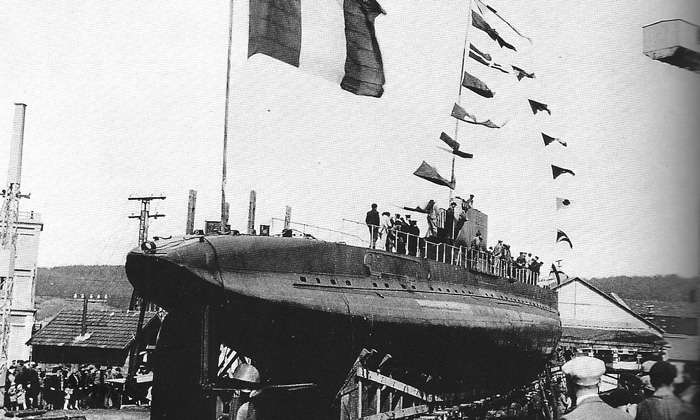
Laid down on 27 June 1932 at the Chantiers Worms shipyard, Rouen, Atlantic coast, Vénus was launched on 6 April 1935, commissioned on 15 November 1936. She joined SubRon 5 (5e Escadrille de Sous-Marin, SubDiv 15 based at Toulon from 1937.
On 10 January 1940, she left Toulon for Oran, patrolling the French West Indies (Carribean, French Antilles and Guadeloupe), and was back home on 3 June 1940. Under Vichy France authority she was sent back in North Africa and by February 1941 she was at Casablanca, French Morocco. From July 1941 to February 1942 she was relocated to Dakar, Senegal. Later she was sent back to Toulon and placed under guard, disarmed and unfuelled.
On 27 November 1942 she was being ordered to scuttle, yet not ready to depart in time, but her captain managed to have her underway anyway, disobeying the orders like Casabianca, Marsouin, Glorieux, and Iris. She proceeded while planning to avoid minefields and German bombers but eventually never made it past the entrance of Toulon Harbour. The captain ordered herto be scuttled and the crew was later interned. The wreck was salvaged in 1951, scrapped.
Junon:

Junon in the Med (P19), Mediterranean 1944
Laid down at the Chantiers et Ateliers Augustin Normand yard, Le Havre, on 9 June 1932, Juno was launched on 15 September 1935, commissioned on 20 September 1937. She would have one of the longest and most fuctiful career of the whole 630 tonnes type. Under the command of Lieutenant de vaisseau Jaume from August 1939 she was based in Oran and Casablanca and back to France in March 1940 for refitting. She left Brest to avoid capture on 18 June 1940 while being unable to go under her own power, towed by the tugboat Nessus, as Minerve to Ushant, and then Plymouth, arriving on the 20th.
On 3 July 1940 Junon was boarded by Royal Marines, but transferred to the FFNF on 27 July, and like her sister due to the lack of parts, only recommissioned by February 1941, under command of Capitaine de corvette Jean-Marie Querville and from August 1941, she became flagship, 1st SubDiv, FNFL with Minerve and Rubis as P19.
By December 1941 she patrolled the Bay of Biscay observing German convoys from Brest and patrolled in 1942 off the Norwegian coast. On 13 March 1942, she was spotted and depth-charged but escape German escorts. In August 1942 she patrolled off Sognefjord. On 15 September she landed British and Norwegian commandos near Glomfjord for “Operation Musketoon”. In October 1942, she attacked several ships in the Vestfjorden, and sank the Nordland. On 13 November she made another “specop”, picking up infiltrated intel agents and their radios in the Melfjorden.
On 1 March 1943, under command of Lieutenant de vaisseau Étienne Schlumberger she went on patrolling off the Norwegian coast without noticeable event. By mid-1943 she entered a drydock for her wartime refit. She was back in operation in February 1944 and ordered to Algiers. She made several patrols in the Mediterranean and on 11 August, was placed due to her age and condition, in reserve at Oran; Her crew transferred to the submarine Morse.
Before the end of the war in Europe, she could have been discarded and scrapped. Instead, she was refitted at Brest from August 1945, recommissioned on 20 October, under command of Jean Dischamps, as a training boat for sonar operators in Brest, also ASW exercises off Toulon. She stayed in that rile under her decommission on 6 December 1954, and only scrapped in 1960, not preserved unfortunately.
Pallas:
Pallas (Q189) was built at Chantiers et Ateliers Augustin Normand shipyard (Le Havre) from 19 October 1936, launched on 25 August 1938, commissioned on 12 June 1939. Thus she was brand new when the war started. Her fate is unknown (main source unavailable), but after Operation Torch, inactivated at Oran like most of the Type 600/630 tonnes, she was scuttled by her crew on 9 November. Later salvaged by the Allies in early 1943, she was examined and judged not worthy of a recommission, instead stricken in 1944 and scrapped postwar.
Ceres:
Launched 9 Dec 1938, commissioned in 1939, she was disarmed at Oran like her sister Pallas in October 1942 and scuttled there on 9 November 1942. Raised by the Allies as being an obstruction in the port, she was mothballed and eventually stricken 18 February 1946.
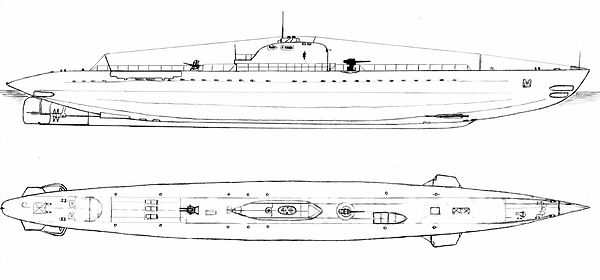
Minerve class profiles
⚙ Minerve class specifications |
|
| Dimensions | 68.10 m long, 5.62 m wide, 4.03 m draft. ( feets) |
| Displacement | 662 t. standard – 856 t. Full Load |
| Propulsion | 2 shafts Normand-Vickers Diesels, 2 EM, 1800/1230 shp |
| Range | RA: 7,000/70 nautical miles surface/sub @ 7kts, oil 65 tons. |
| Armament | 6x 550 mm TTs (21.7 in),3x 400 mm (15.7 in), 1x 3-in/35 M28 (76 mm), 2x 13.2 mm HMG. |
| Crew | 42 |
Read More/Src
Books
Conway’s all the world’s fighting ships 1921-47
Moulin, Jean (2006). Les sous-marins français en images (in French). Rennes: Marines Éditions.
Donald A. Bertke; Don Kindell; Gordon Smith; Susan A. Bertke (2011). World War II Sea War, Naval Actions from April 1940 through September 1940.
Jean Moulin, Les sous-marins français en images, Rennes, Marines Éditions, 2006, 91 p.
Jean-Jacques Antier, L’Aventure héroïque des sous-marins français : 1939-1945, Éditions maritimes et d’outre mer, 1984
Eddy Florentin et Jacques Zang, Les rebelles de La Combattante, Ancre de Marine Editions, 2009
Jean-Paul Nadeau et Claude Rogel, «Sous-Marin Orion»: Sous-Marins Français Disparus & Accidents
Links
http://u-boote.fr/eurydice1.htm
http://u-boote.fr/ondine.htm
uboat.net/ French subs
agasm.fr/ classe-ondine-1.pdf
Le Bouclier de Neptune, V. Mise en œuvre de la défense des côtes par la Marine
French Navy and Washington consequences – Jstor, Naval College
On weaponsandwarfare.com
agasm.fr/ classe-diane-2.pdf
Orion – archive
on agasm.fr/ classe-argonaute-2.pdf
agasm.fr /classe-diane-2.pdf
Logs on uboat.net
worldnavalships.com/ariane_class.htm
/uboat.net/ French Submarine
uboat.net/ 300.html
wikipedia.org Ariane-class_submarine
wikipedia.org/ Danaé
agasm.fr classe-circé.pdf
les-sous-marins-du-groupe-jules-verne
sous-marin-doris
mazagan-aamr.fr/ meduse
No Room for Mistakes: British and Allied Submarine Warfare 1939-1940 De Geirr H Haarr
Model Kits: None found (yet). Not a particularly popular subject, even for Heller, the national kit manufacturer (defunct).

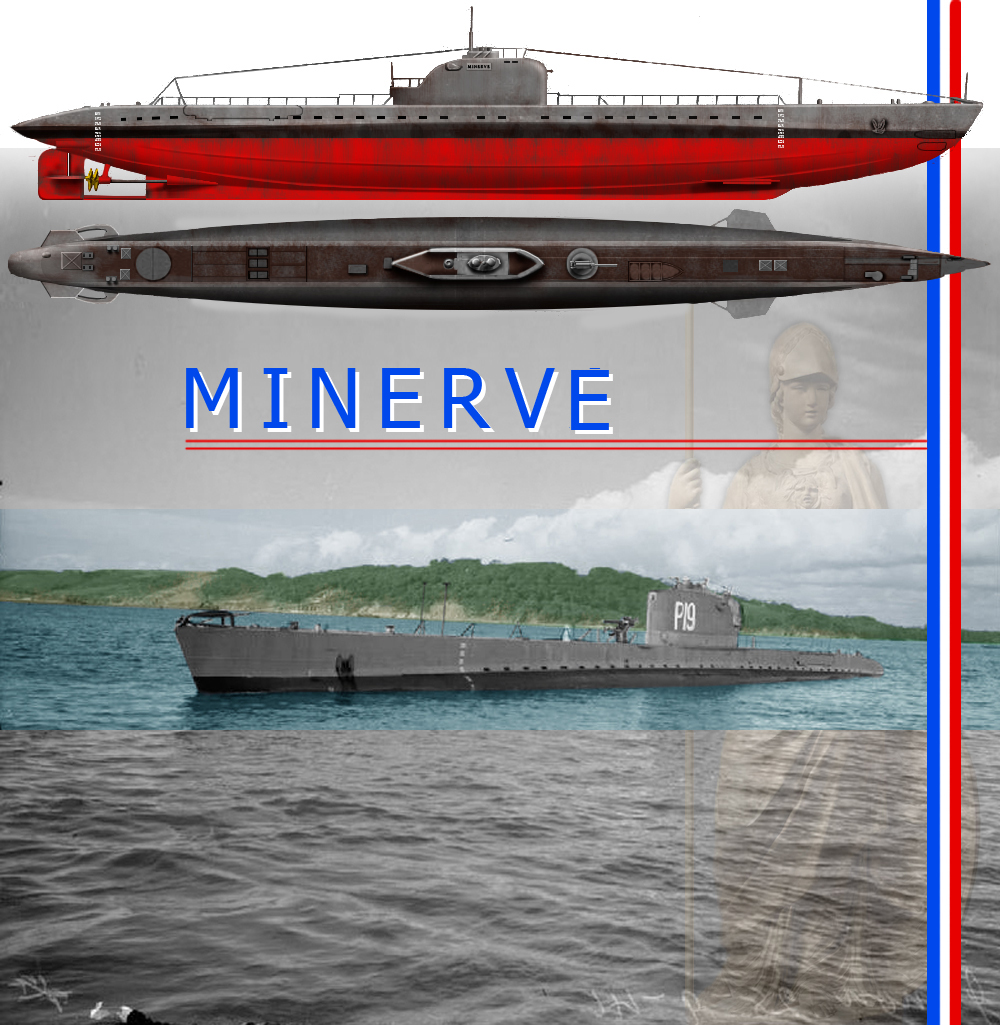
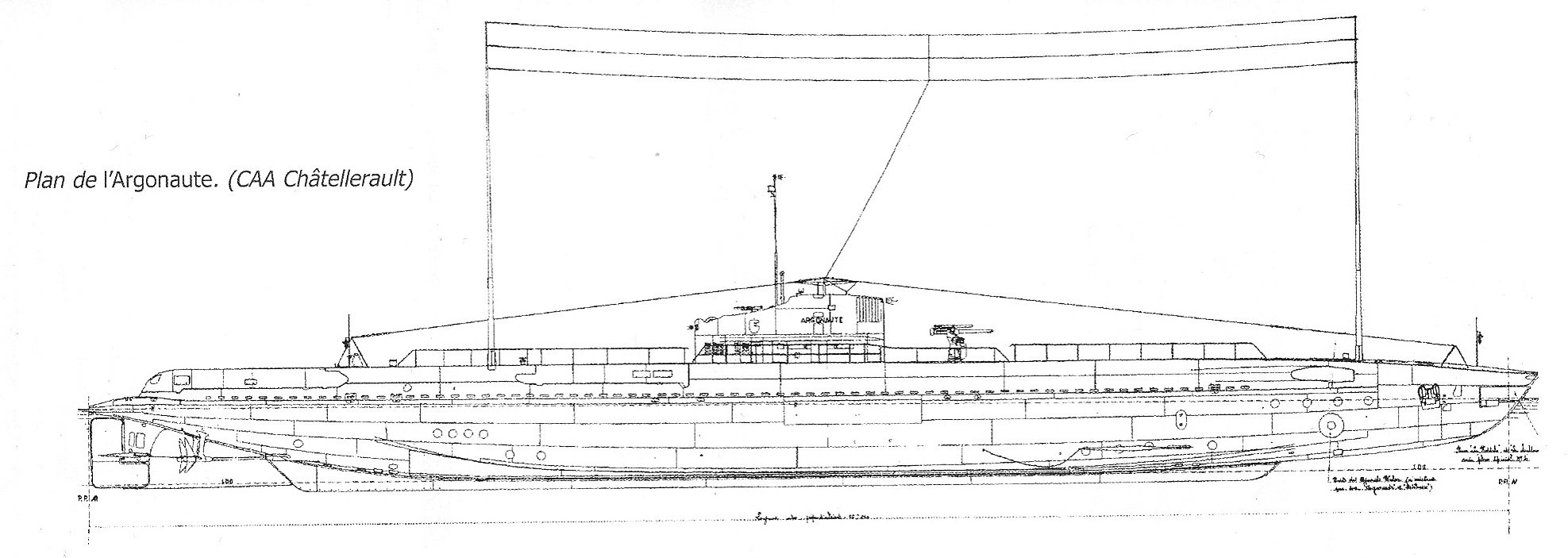
 Latest Facebook Entry -
Latest Facebook Entry -  X(Tweeter) Naval Encyclopedia's deck archive
X(Tweeter) Naval Encyclopedia's deck archive Instagram (@navalencyc)
Instagram (@navalencyc)





 French Navy
French Navy Royal Navy
Royal Navy Russian Navy
Russian Navy Armada Espanola
Armada Espanola Austrian Navy
Austrian Navy K.u.K. Kriegsmarine
K.u.K. Kriegsmarine Dansk Marine
Dansk Marine Nautiko Hellenon
Nautiko Hellenon Koninklije Marine 1870
Koninklije Marine 1870 Marinha do Brasil
Marinha do Brasil Osmanlı Donanması
Osmanlı Donanması Marina Do Peru
Marina Do Peru Marinha do Portugal
Marinha do Portugal Regia Marina 1870
Regia Marina 1870 Nihhon Kaigun 1870
Nihhon Kaigun 1870 Preußische Marine 1870
Preußische Marine 1870 Russkiy Flot 1870
Russkiy Flot 1870 Svenska marinen
Svenska marinen Søværnet
Søværnet Union Navy
Union Navy Confederate Navy
Confederate Navy Armada de Argentina
Armada de Argentina Imperial Chinese Navy
Imperial Chinese Navy Marinha do Portugal
Marinha do Portugal Mexico
Mexico Kaiserliche Marine
Kaiserliche Marine 1898 US Navy
1898 US Navy Sovietskiy Flot
Sovietskiy Flot Royal Canadian Navy
Royal Canadian Navy Royal Australian Navy
Royal Australian Navy RNZN Fleet
RNZN Fleet Chinese Navy 1937
Chinese Navy 1937 Kriegsmarine
Kriegsmarine Chilean Navy
Chilean Navy Danish Navy
Danish Navy Finnish Navy
Finnish Navy Hellenic Navy
Hellenic Navy Polish Navy
Polish Navy Romanian Navy
Romanian Navy Turkish Navy
Turkish Navy Royal Yugoslav Navy
Royal Yugoslav Navy Royal Thai Navy
Royal Thai Navy Minor Navies
Minor Navies Albania
Albania Austria
Austria Belgium
Belgium Columbia
Columbia Costa Rica
Costa Rica Cuba
Cuba Czechoslovakia
Czechoslovakia Dominican Republic
Dominican Republic Haiti
Haiti Hungary
Hungary Honduras
Honduras Estonia
Estonia Iceland
Iceland Eire
Eire Equador
Equador Iran
Iran Iraq
Iraq Latvia
Latvia Liberia
Liberia Lithuania
Lithuania Mandchukuo
Mandchukuo Morocco
Morocco Nicaragua
Nicaragua Persia
Persia San Salvador
San Salvador Sarawak
Sarawak Uruguay
Uruguay Venezuela
Venezuela Zanzibar
Zanzibar Warsaw Pact Navies
Warsaw Pact Navies Bulgaria
Bulgaria Hungary
Hungary

 Bundesmarine
Bundesmarine Dutch Navy
Dutch Navy Hellenic Navy
Hellenic Navy Marina Militare
Marina Militare Yugoslav Navy
Yugoslav Navy Chinese Navy
Chinese Navy Indian Navy
Indian Navy Indonesian Navy
Indonesian Navy JMSDF
JMSDF North Korean Navy
North Korean Navy Pakistani Navy
Pakistani Navy Philippines Navy
Philippines Navy ROKN
ROKN Rep. of Singapore Navy
Rep. of Singapore Navy Taiwanese Navy
Taiwanese Navy IDF Navy
IDF Navy Saudi Navy
Saudi Navy Royal New Zealand Navy
Royal New Zealand Navy Egyptian Navy
Egyptian Navy South African Navy
South African Navy






























 Ukrainian Navy
Ukrainian Navy dbodesign
dbodesign